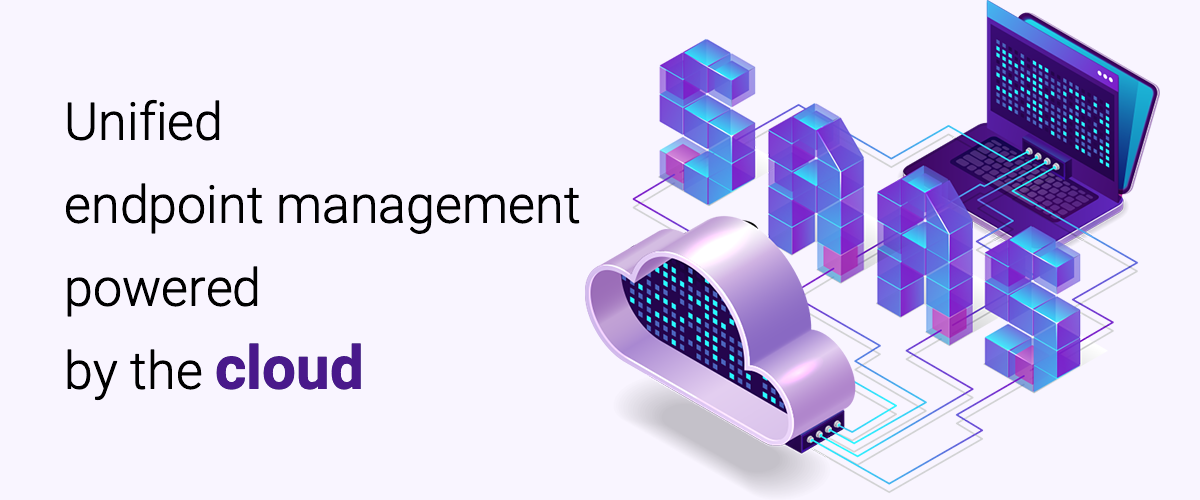ManageEngine’s unified endpoint management (UEM) solution, Desktop Central is now available in the cloud.
Desktop Central Cloud can monitor, secure and manage all network endpoints (including BYOD devices), in a simplified process. You now have the ability to troubleshoot remotely, manage patches, deploy Service Packs and more, from the cloud.
Components of architecture:
- Desktop Central Cloud server
- Desktop Central agents
- Distribution server
- Web console
- Active Directory
- Patch database
- Notification services
The Desktop Central Cloud server resides in one of Zoho Corporation’s data centers, and the Desktop Central agent, a lightweight component, is installed on all the computers you wish to manage using Desktop Central. The Desktop Central agent aids in the completion of various tasks initiated from the Desktop Central Cloud server.
For instance, if you want to uninstall an application, the necessary settings can be configured for the corresponding agent on the server, while the agent will replicate these settings and remove the application from the computer it is installed on. This agent will update the status of these tasks back to the server.
For managing mobile devices, any communication is routed through notification services such as Apple Push Notification service (APNs) for iOS devices, Firebase Cloud Messaging (FCM) for Android devices, and Windows Notification Service (WNS) for Windows devices. The agent communicates with the server periodically to fetch the allotted tasks, and shares the status of the tasks with the server.
For managing branch offices, the distribution server is installed on one of the branch office computers. The distribution server communicates with the server to fetch tasks for that particular branch office’s agents. In addition, the distribution server synchronizes with the server for missing patch details. These patches are then downloaded directly from the respective vendor’s website and distributed across the branch office agents depending on the status of the missing patches on each computer. The branch office agents send the status of each task back to the server.
For roaming user management, the agent pulls the missing patch details from the server and downloads the missing patches directly from the vendor’s website; the patches are then deployed to the required machines. Once deployment is complete, the status is sent to the server.
The patch database is a portal on the ManageEngine website that hosts the latest vulnerability database. The Desktop Central Cloud server periodically synchronizes with the patch database’s information on available patches and scans the computers in the network to determine which patches are missing. The results of that scan are stored in the server and can be viewed from the web console.
The web console is an interface for accessing the Desktop Central Cloud server, and all endpoint management and security operations can be performed from here. This console can be accessed from anywhere.
Since the Desktop Central Cloud server resides in Zoho Corporation’s data center, it is not possible for the server to communicate with a network’s Active Directory. If a user would like to integrate Desktop Central Cloud with their organization’s Active Directory, the distribution server installed in the branch office can be configured as an AD connector. The AD connector will fetch the Active Directory details of that particular network.
For more information, contact our ManageEngine NZ team today.

